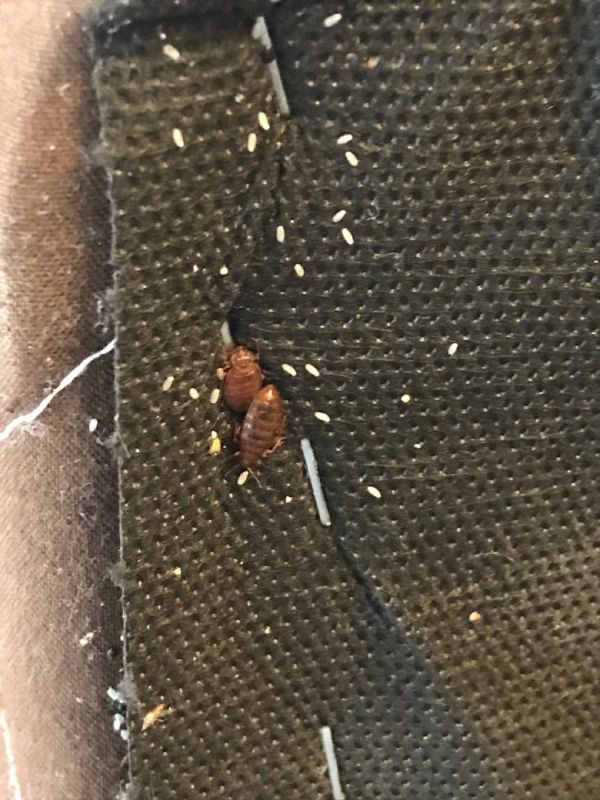Exploring the Scientific Research Behind Bed Insect Warmth Treatments as a Sustainable Parasite Administration Strategy
In the world of insect monitoring, the quest for reliable and lasting solutions remains a consistent search. One such approach that has gained traction recently is the use of warmth therapies to deal with bed bug problems. By harnessing the science behind thermal fatality points for these persistent pests, heat therapies offer an encouraging option to typical chemical-based methods. The complexities of exactly how heat efficiently removes bed insects and the broader ramifications for sustainable pest monitoring methods make this a topic worth exploring better.
Bed Insect Warmth Therapy Refine

Thermal Fatality Point for Bed Insects
Revealing bed insects to elevated temperatures beyond their thermal resistance array is crucial for achieving reliable elimination in warm treatment processes. The thermal fatality factor for bed pests refers to the temperature at which these pests can not endure. Study shows that bed pests begin to perish when revealed to temperature levels above 113 ° F(45 ° C) for a sustained period. As the temperature level raises, so does the mortality rate of bed pests. At around 118 ° F(48 ° C ), bed insects begin to pass away swiftly, with a death rate of virtually 99% within minutes of exposure. This shows the sensitivity of bed bugs to high temperatures and highlights the performance of warm therapies in removing infestations. By getting to and keeping temperatures over the thermal death factor for bed bugs, parasite administration experts can guarantee thorough elimination of bed pest populations, consisting of hard-to-reach areas where chemical therapies may be much less efficient. Recognizing the thermal death factor for bed bugs is essential for carrying out successful warm therapy techniques and attaining sustainable parasite administration end results.
Advantages of Warm Treatments
Having established the important thermal fatality point for bed bugs, it is necessary to currently discover the substantial benefits that warm treatments offer in efficiently eliminating these durable insects. When contrasted to standard chemical techniques, heat therapies existing a number of crucial benefits. Among the key advantages is that warm can penetrate deep right into splits and gaps where bed bugs conceal, making certain that also the most hard-to-reach locations are heated up to dangerous temperature levels. This detailed method not only eliminates live pests but also targets bed pest eggs, stopping future infestations.
In addition, heat treatments are non-toxic and eco friendly, making them a lasting insect administration strategy. Unlike chemical pesticides, heat treatments do not leave unsafe residues that can present dangers to human wellness or the environment. This aspect is especially vital in delicate environments such as hospitals, institutions, and suburbs where chemical usage might not be desirable.
Additionally, warmth treatments have a high success rate in eliminating bed insect invasions in a single treatment, minimizing the requirement for numerous visits and minimizing disruption to residents. This effectiveness not just conserves time and cash yet additionally gives assurance to those taking care of bed insect issues.
Efficiency of Warm Treatment

Heat therapies have the included advantage of eliminating bed insect eggs, which are frequently resistant to traditional chemical therapies. On the whole, the effectiveness of warmth therapies in eliminating bed bug infestations makes them a sustainable and trustworthy bug administration strategy.
Lasting Bug Monitoring Advantages
Carrying out sustainable parasite management methods offers long-term advantages for both the atmosphere and public wellness. By making use of methods such as heat treatments for parasite control, we can reduce the reliance on dangerous chemical pesticides that can have adverse impacts on ecological communities and human health - bed bug heat treatment. Lasting pest management techniques aid in preserving biodiversity by targeting particular insects without hurting non-target organisms, consequently preserving a well balanced environment
Additionally, sustainable insect administration practices add to the overall health and well-being of the general public. By reducing exposure to toxic chemicals used in traditional parasite control approaches, warm treatments supply a more secure option for insect administration in domestic, commercial, and public rooms. This decrease in chemical usage likewise helps in preventing chemical deposits from contaminating dirt, air, and water, protecting environmental top quality.
Final Thought
To conclude, bed pest warm treatments have actually been shown to be a effective and lasting bug management anonymous approach. The thermal fatality factor for bed bugs makes them at risk to warm treatments, which have many advantages over typical chemical treatments. The efficiency of heat therapies in eliminating bed insect infestations while lessening environmental effect highlights the possibility of this approach as a sustainable remedy for insect control.
The bed pest heat therapy procedure involves increasing the temperature within ravaged areas to a level that properly eliminates bed insects and their eggs. By getting to and maintaining temperatures above the thermal death factor for bed pests, bug management experts can make certain comprehensive elimination of bed bug populaces, consisting of hard-to-reach locations where chemical treatments may be much less reliable. One of the primary advantages is that warm can permeate deep right into crevices and fractures where bed insects conceal, ensuring that even the most hard-to-reach locations are warmed to dangerous temperatures. Unlike chemical treatments that may leave behind resistant populations, heat treatments supply a environmentally friendly and non-toxic solution that can penetrate deep into furniture, wall surfaces, and various other hard-to-reach locations where bed insects hide.
The thermal death point for bed bugs makes them vulnerable to warm therapies, which have many view publisher site benefits over standard from this source chemical therapies.